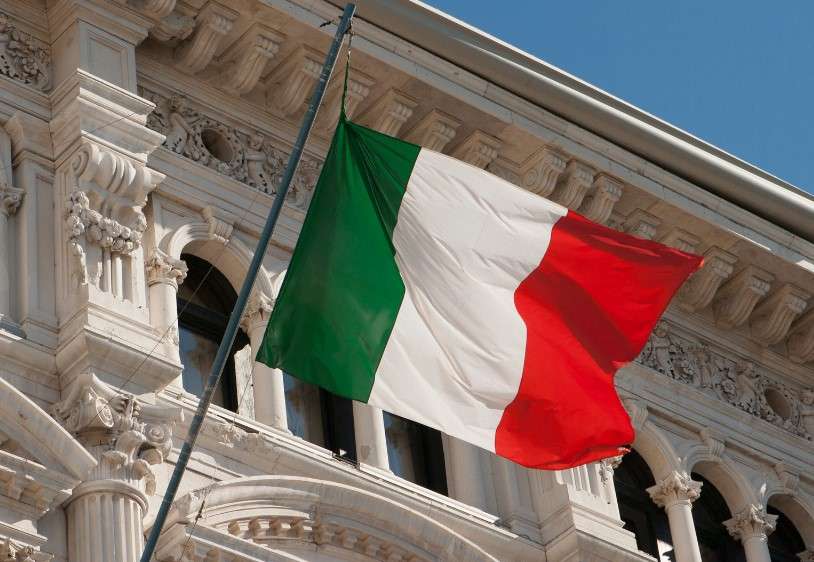21 Famous Italian Symbols & Meanings: Icons of Italy
Italy, a country rich in history and culture, boasts a unique collection of symbols epitomizing its heritage. While the state officially recognizes some famous Italian symbols, others have become integral to the nation’s cultural fabric.
Delving into these Italian symbols, emblems, personifications, and allegories allows us to explore the essence of Italy and appreciate its remarkable past.
What Are the 21 Most Famous Italian Symbols?
Let’s uncover the cultural significance of 21 famous Italian symbols, shedding light on their meaning and importance in Italy’s vibrant identity.
National Colors of Italy

The national colors of Italy are green, white, and red. These colors are prominently featured on the Italian flag, also known as the “tricolore.” Each color has significance: green represents hope, white symbolizes faith, and red stands for charity.
Combining these colors is thought to embody the unity and strength of the Italian people, reflecting their shared history, culture, and ideals.
National Day of Italy
The National Day of Italy, also known as Festa della Repubblica, is celebrated annually on June 2nd. This day commemorates the 1946 referendum, in which the Italian people chose a republican form of government over a monarchy, leading to the formation of the Italian Republic.
Festa della Repubblica is marked by various events, including parades, concerts, and fireworks, as Italians celebrate their national identity and the values of democracy and freedom.
Curious about Italy’s 2024 official observances? Dive into the vibrant celebrations and observances by exploring our Italy Calendar 2024.
Currency of Italy
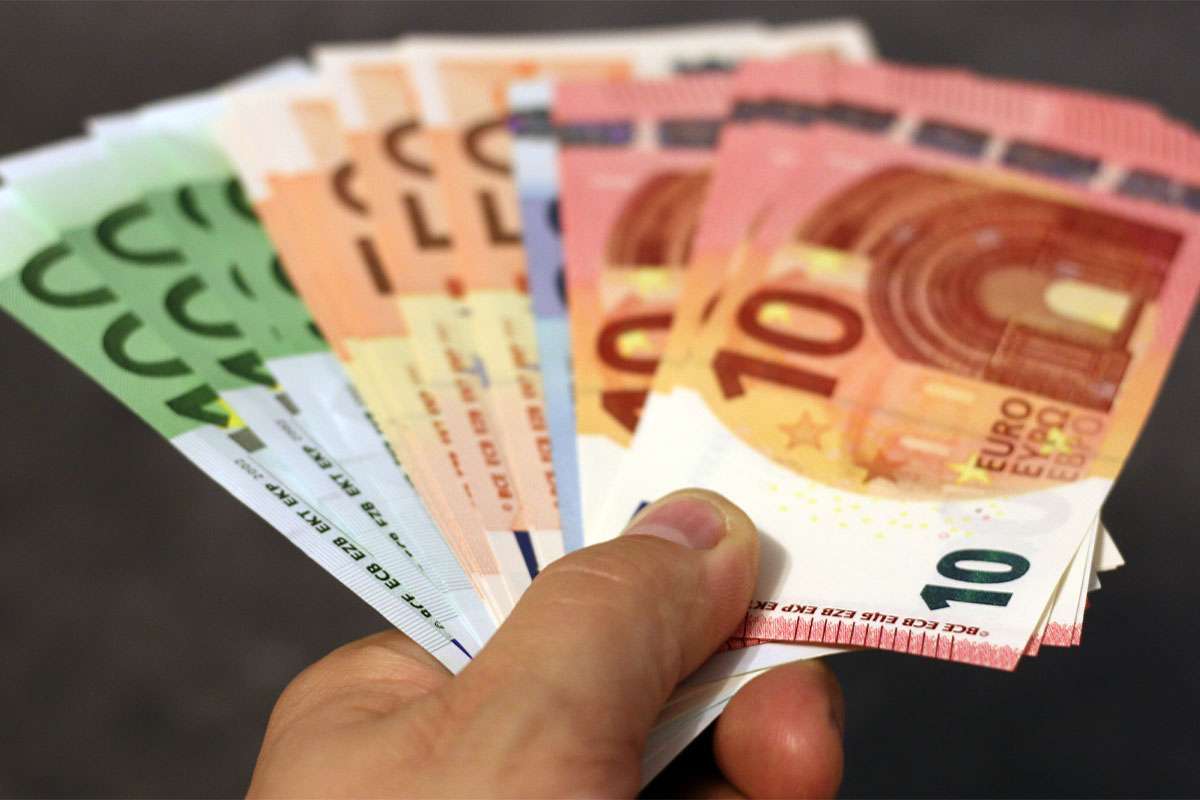
In the past, Italy’s currency was the lira; however, today, the country uses the euro as its official currency. The transition from the lira to the euro took place in 1999. Since then, Italy and many other European countries have widely adopted the euro.
National Flower of Italy

The national flower of Italy is the Lily, specifically the white Lily (Lilium candidum). The Lily is a symbol of purity, innocence, and virtue. Its elegant beauty and strong fragrance have made it popular for various celebrations, including weddings and religious ceremonies.
Suggested Read: 20 Best Italian Perfume Brands & Luxurious Fragrances
The Lily is often associated with the Virgin Mary in Italian art and culture. This white flower has been used to symbolize the city of Florence, one of Italy’s most culturally and historically significant cities.
Italian Flag
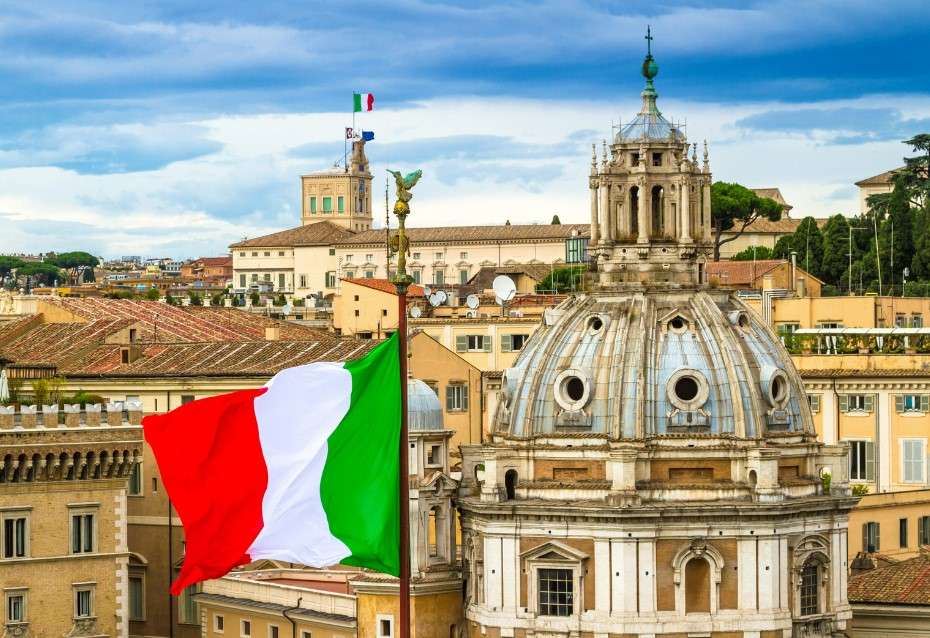
The Italian flag’s colors take inspiration from the French flag, but the blue from the French flag has been replaced with the green of Milan’s Civic Guard. The Italian flag has undergone numerous modifications since 1797, and the present tricolor pattern was established as the Italian Republic’s national flag in 1946.
The flag features three primary colors: green, white, and red. One interpretation of these colors is that green symbolizes the hills and plains of Italy, white signifies the snow-capped mountains, and red represents the blood spilled during the nation’s Unification and Independence.
Alternatively, a more religious explanation associates green with hope, red with charity, and white with faith.
Suggested Read: Irish Flag vs. Italian Flag: Key Differences Explained
Aquila
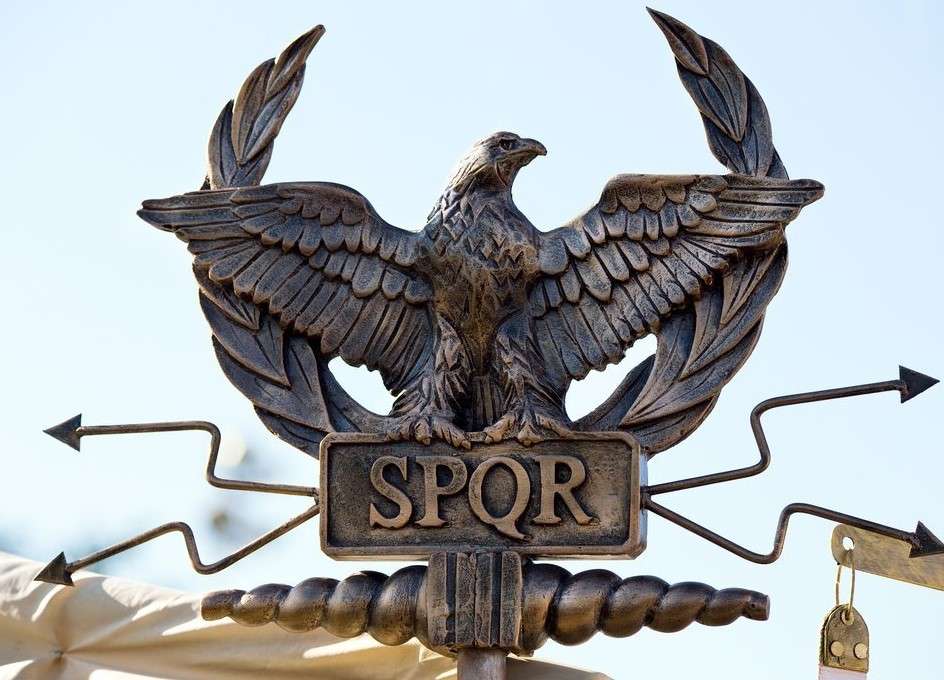
Derived from the Latin word for ‘eagle,’ Aquila was a prominent symbol in ancient Rome. Roman legionaries, known as ‘aquilifers,’ carried this standard, which held significant importance to soldiers as a representation of their legion.
Protecting and recovering the eagle standard in battle was crucial, as losing it was considered the ultimate disgrace. Today, some European nations and cultures feature eagles similar to Aquila on their flags, often as a nod to their connections with the Roman Empire.
Emblem of Italy

Italy’s emblem features a five-pointed white star called the Stella d’Italia on a five-spoke cogwheel. An olive branch on one side and an oak branch on the other surround the cogwheel, tied with a red ribbon inscribed with “Repubblica Italiana.”
The Italian government extensively uses this emblem, formally adopted by the Italian Republic in 1949. The oak branch symbolizes the strength and dignity of the Italian people, while the olive branch represents peace. The emblem’s design intentionally deviates from conventional norms.
Additional Resource: If you’re looking to become an Italian citizen, our guide can help you achieve your goal.
Stella d’Italia
The Stella d’Italia, a white, five-pointed star, is among Italy’s oldest national symbols, with origins tracing back to Ancient Greece.
The star symbolically embodies the Italian peninsula’s luminous future and has represented it for generations. In the 16th century, the star became associated with Italia Turrita, the personification of Italy as a nation. By the mid-20th century, it was incorporated as a key element of Italy’s emblem.
Italia Turrita
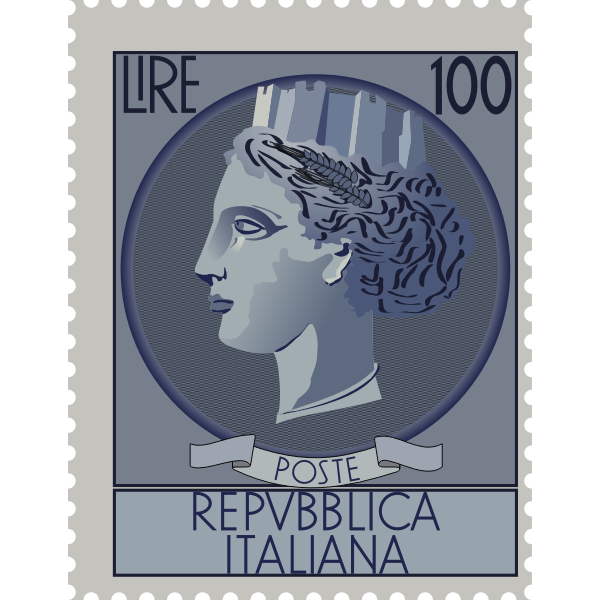
Italia Turrita, or “turreted Italy,” is Italy’s national personification, depicted as a young woman. She wears a mural crown adorned with towers that circle her head. Occasionally, the Stella d’Italia and other Italian emblems appear alongside her.
The towers are connected to ancient Rome and have come to represent Italian cities over time. Political, literary, and artistic representations of Italia Turrita have been widespread for centuries, making her one of Italy’s most iconic and important symbols.
Italian Wolf (Cane Lupo)
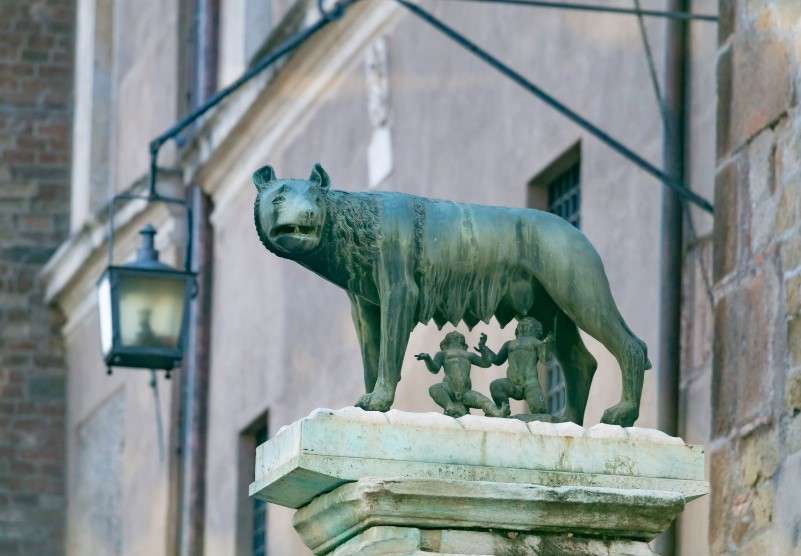
While Italy’s national animal is a matter of debate, the gray wolf, also known as the Apennine Wolf, is often considered the unofficial symbol. These wolves inhabit the Apennine Mountains and are the area’s dominant wild animals and sole large predators.
Legend states that a female gray wolf nursed Romulus and Remus, the founders of Rome, linking the grey wolf to Italy’s founding myths.
Additional Resource: Beyond Italy’s national animal, discover Italy’s beloved dog breeds.
Roman Toga
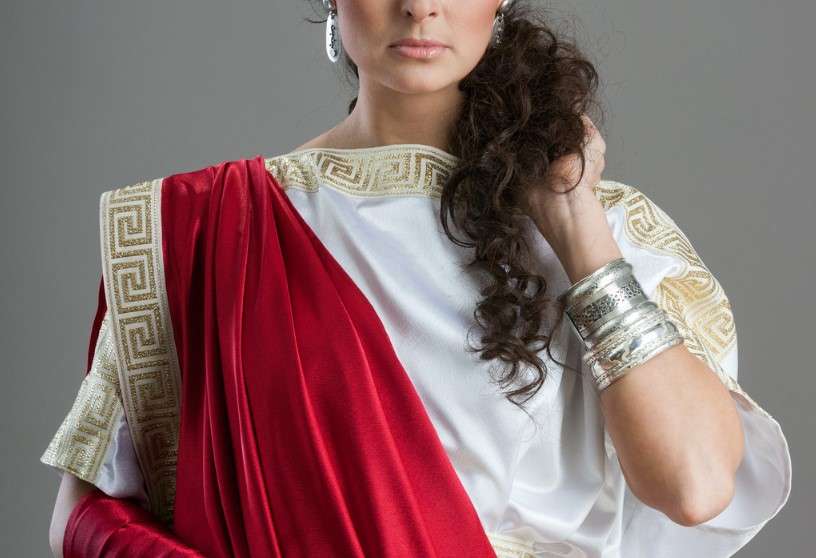
The Roman toga, an iconic garment from ancient Rome, served as a military cloak and was draped around the wearer’s body. Worn above armor, it was a quadrilateral piece of fabric fastened at the shoulder with a clasp, symbolizing combat and peace.
The toga’s color would change depending on the context: emperors and victorious generals donned purple togas, while dark-colored ones were reserved for funerals. As time passed, togas became increasingly elaborate and featured a variety of colors based on the wearer’s preference.
David by Michelangelo
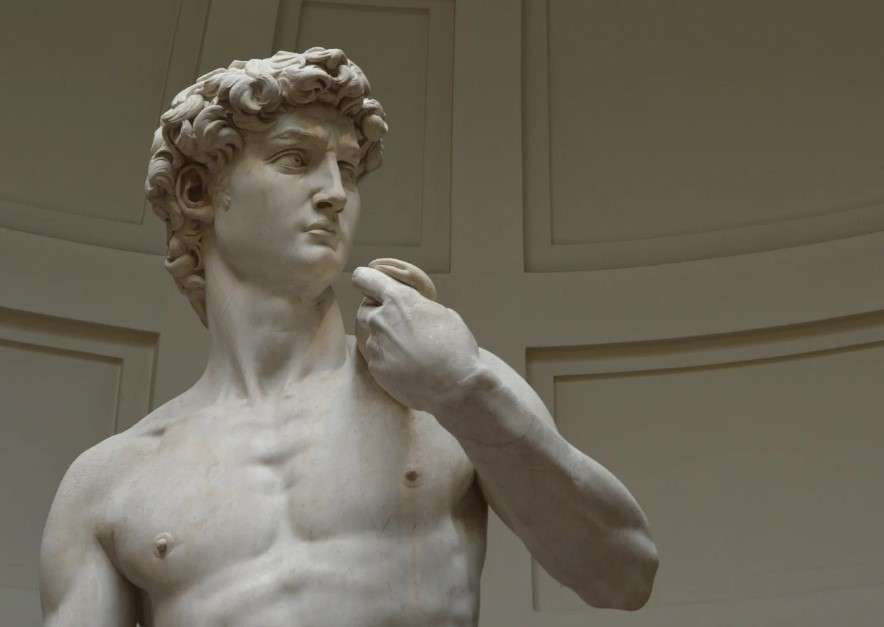
Between 1501 and 1504, the Italian artist Michelangelo created his iconic marble sculpture of David, becoming one of Italy’s most famous landmarks.
Standing 17 feet tall, this historical symbol portrays the biblical figure David in a double life-sized representation, armed with a stone in one hand and a slingshot in the other, ready for combat. As time passed, David’s statue evolved into a symbol of the protection of civil liberties within the autonomous city-state of Florence.
Planning a trip to Italy? Dive into the best travel books for Italy to explore its scenic views, rich history, and delectable cuisine.
Laurel Wreath
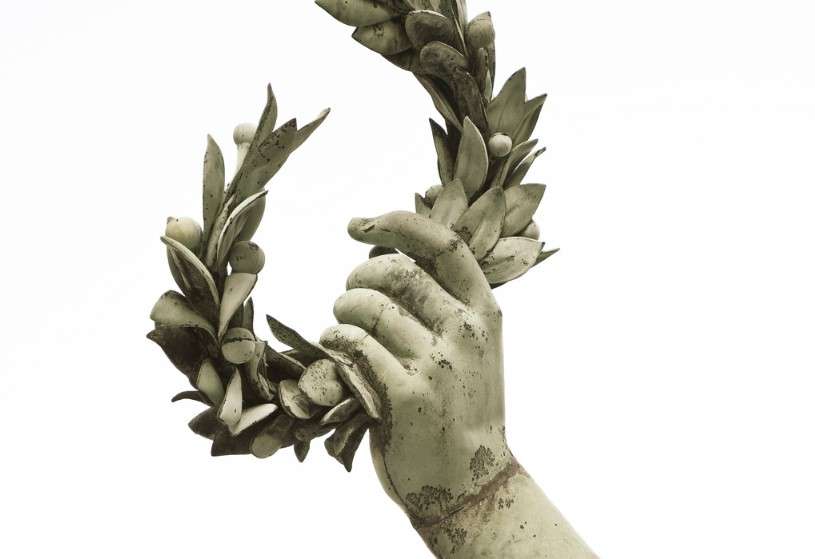
Originating in Greece, the Laurel Wreath is a well-known Italian symbol. The Greek Sun God Apollo is frequently depicted wearing a laurel wreath on his head. In ancient times, laurel wreaths were awarded to victors in athletic competitions, including the Olympics.
In Rome, these wreaths symbolized military triumph and were used to crown successful commanders. While ancient wreaths typically resembled a horseshoe shape, modern versions are complete circles. Laurel wreaths are sometimes utilized in heraldry as a shield or charge.
Cockade of Italy

The Italian cockade is a national emblem consisting of green, white, and red ribbons folded together, reflecting the colors of the Italian flag. Green is in the center, white surrounds it, and red forms the ornament’s border.
During the uprisings leading to Italian unification, the cockade was a widespread symbol; patriots attached it to their hats and jackets until Italy’s regions unified in 1861, giving rise to the Kingdom of Italy.
Globus (Orb/Globe)
The Globus is a prevalent symbol in Rome, appearing on statues and coins throughout the Roman Empire. It is often depicted in the hand of an emperor or beneath his foot, signifying control over the vast Roman territories.
The Globus represents the Earth and the universe in their spherical form. Roman gods, particularly Jupiter, are frequently shown grasping a globe or standing over it, symbolizing the gods’ ultimate authority over the land.
Strawberry Tree

The strawberry tree became an Italian symbol during the late 19th century amidst the country’s unification. Its autumn hues evoke the colors of the Italian flag: green in the leaves, white in the flowers, and red in the berries.
The strawberry tree is also recognized as Italy’s national tree. Giovanni Pascoli was the first to associate the strawberry tree with Italy and connect it to the Italian flag.
Gladiator Helmet
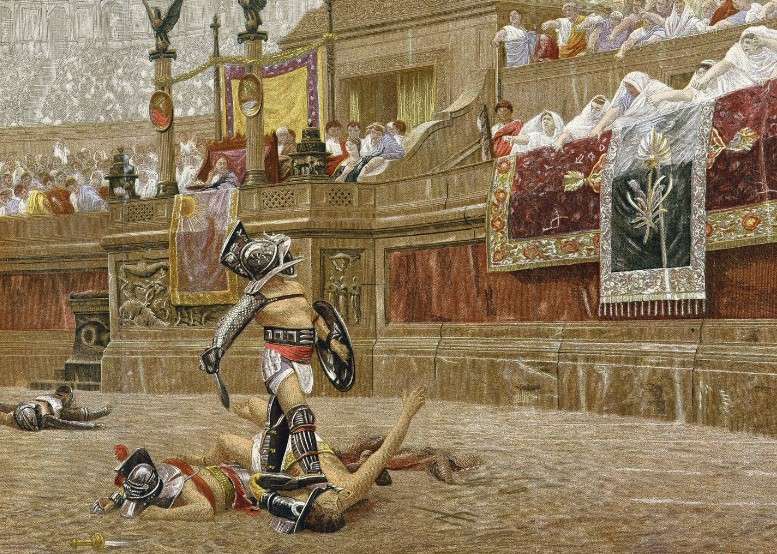
The gladiator helmet is a prominent Italian symbol closely associated with the ancient Roman Empire. These helmets were worn by gladiators, professional fighters known for their intense battles in Roman arenas.
Crafted from durable metals like bronze or iron, the helmets featured intricate designs and protected the wearer’s head and face during combat.
The gladiator helmet represents not only the strength and courage of these warriors but also the rich history and culture of ancient Romans. Today, the gladiator helmet serves as a reminder of Italy’s powerful past and continues to captivate people with its fascinating legacy.
National Dessert of Italy: Tiramisu

Tiramisu is often considered the national dessert of Italy. Although there are numerous delicious desserts in Italian cuisine, tiramisu is the most famous Italian dessert worldwide.
This classic dessert consists of layers of coffee-soaked ladyfinger biscuits, rich mascarpone cheese, and a dusting of cocoa powder, offering a delightful and indulgent treat.
National Dish of Italy: Ragù alla Bolognese

While pizza is typically the first dish that comes to mind when considering Italian cuisine, the authentic national dish of Italy is Ragù alla Bolognese. This dish is widely recognized globally in various forms, with Spaghetti Bolognese being one of its most popular iterations.
Ragù alla Bolognese is a hearty, slow-cooked meat sauce originating from Bologna. It is often served with pasta and enjoyed by people worldwide for its rich, savory flavors.
Suggested Read: Is Bologna Worth Visiting? Your All-Inclusive Travel Guide
National Trees of Italy: Olive and Oak Trees
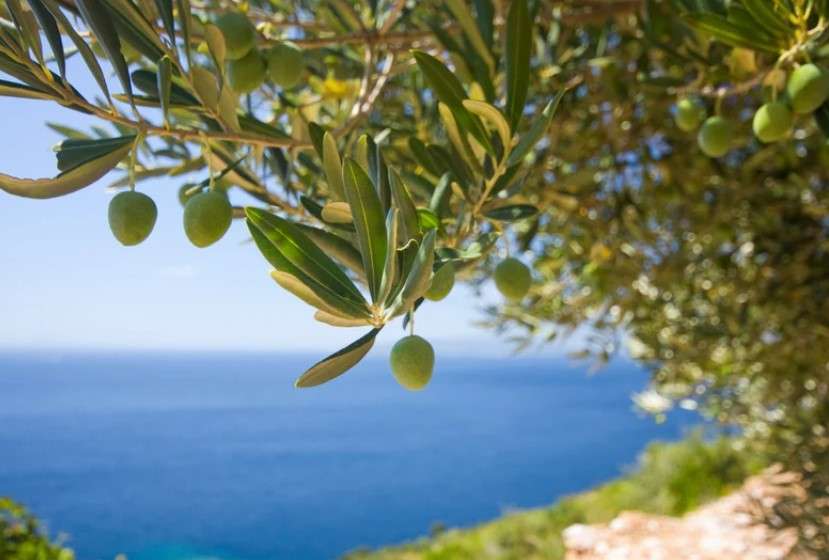
The national trees of Italy are the Olive (Olea europaea) and Oak (Quercus spp.) trees, which hold significant importance in Italian culture, history, and economy.
The Olive tree has been cultivated in Italy for thousands of years, dating back to Roman times. It is deeply ingrained in the Italian way of life. Olive trees are admired for their beauty and longevity and provide essential resources, such as olives and Italian olive oil.
Olive oil has been a staple in Italian cuisine and a symbol of peace, prosperity, and wisdom. The resilient nature of Olive trees, which can withstand harsh conditions and continue to bear fruit, represents the strength and perseverance of the Italian people.
On the other hand, the Oak tree is valued for its majestic appearance, strength, and durability. In Italy, Oak trees can be found in various regions, from the plains to the mountains.
Throughout history, Oak wood has been used for building ships, furniture, and wine barrels, showcasing its versatility and practicality. The Oak tree also symbolizes stability, endurance, and deep-rooted traditions, reflecting the longstanding heritage and values of the Italian nation.
Suggested Read: Explore Trees in Italian: A Linguistic Journey Rooted in Nature (with Audio Guide).
National Bird of Italy: Italian Sparrow

The national bird of Italy is the Sparrow (Passer domesticus). This small, adaptable bird can be found in various habitats across Italy, including urban centers, farmlands, and woodlands. With its familiar chirping song and social nature, the Sparrow holds a special place in the hearts of Italians.
The Sparrow represents simplicity, resourcefulness, and the ability to thrive in diverse environments. As a symbol of adaptability and community, the Sparrow reflects the spirit of the Italian people, who have long been known for their ability to embrace change and innovation while preserving their rich culture and traditions.
Suggested Read: Discovering Italian animal names offers a fun approach to strengthen your bond with Italy’s vibrant way of life.
Celebrating Italy’s Cultural Tapestry Through Its Iconic Symbols
In exploring Italy’s famous symbols, we have uncovered the rich tapestry of the nation’s culture, history, and Italian language.
These 21 famous Italian symbols, including historical symbols and the most famous Italian landmarks, serve as a testament to Italy’s diverse heritage and distinctive character, providing an enthralling insight into the core of Italian life.
As you delve deeper into these symbols, may they inspire you to immerse yourself further in Italy’s captivating culture and possibly personally embrace the Italian way of life.
Further Reading:

